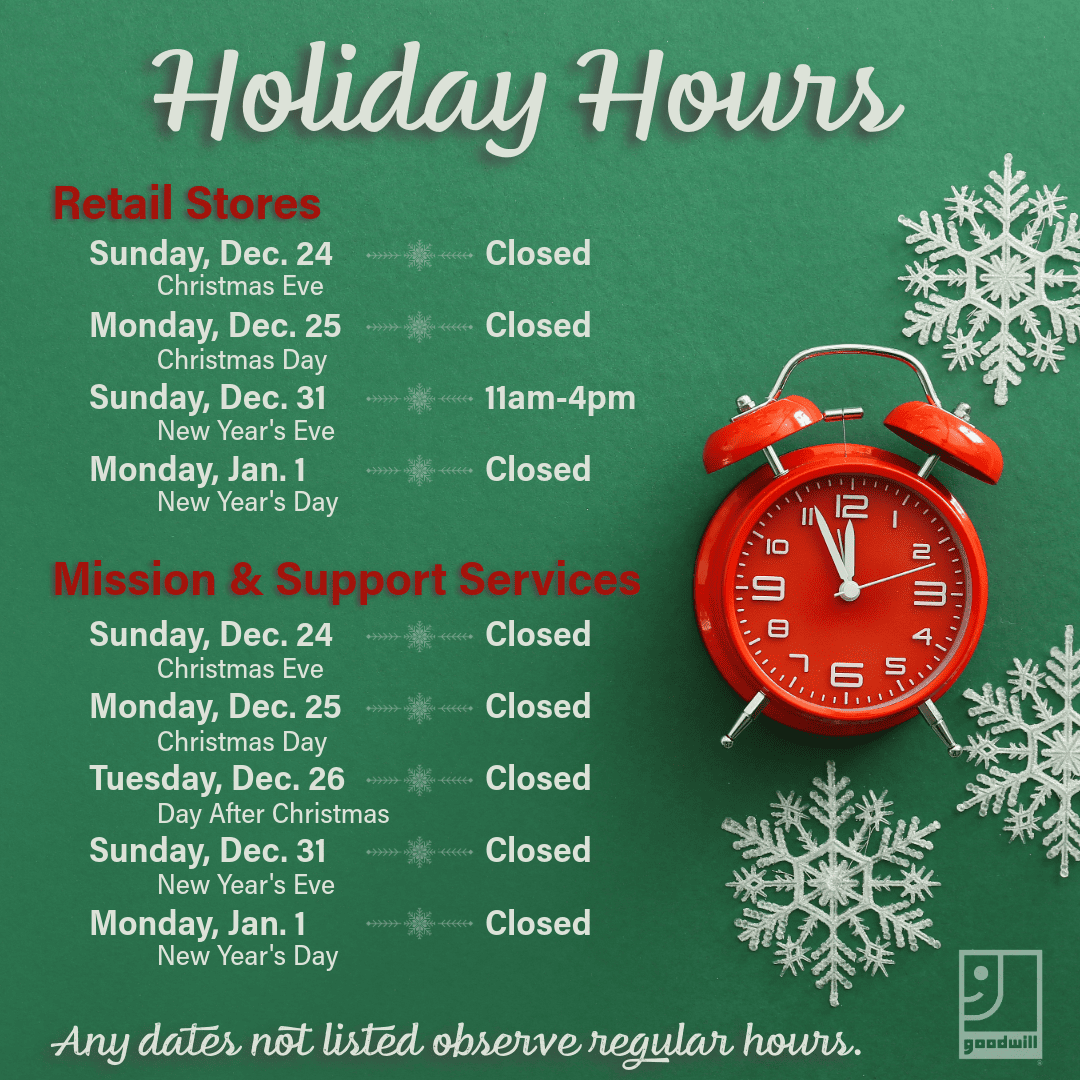
As Earth Day approaches, Goodwill of the Heartland is proud to announce a partnership of local organizations for “Earth Day in Action,” a two-day event aimed at promoting sustainability, community engagement and environmental stewardship. Taking place Friday, April 19, from noon to 5 p.m., and Saturday, April 20, from 9 a.m. to noon, at the former Collins Road Hy-Vee parking lot located at 279 Collins Rd NE in Cedar Rapids, the event invites residents to donate their unwanted or unused items for worthy causes.
“Earth Day in Action” offers a unique opportunity for individuals to make a tangible impact on the environment while supporting local community groups and nonprofits. Donation stations will accept a wide range of goods, while some groups will provide Earth Day-related merchandise, such as seeds for plants that butterflies love. The event aims to foster a culture of sustainability and responsibility toward our community and our planet.
This promises to be a transformative event, uniting organizations and people from all walks of life in a shared commitment to local solutions and sustainability. Working together, we can make a difference, fully utilize the resources already in our community and pave the way for a greener future.

In observance of the Easter holiday, all Goodwill of the Heartland locations will be closed on Sunday, March 31. We believe it's important for team members to spend quality time with their loved ones.
We apologize for any inconvenience this may cause and appreciate your understanding. Regular hours resume on Monday, April 1.
We wish you a joyful Easter filled with light, laughter and cherished moments with those you love.
Goodwill of the Heartland was recently featured on The Corridor Spotlight Podcast, hosted by Stefan Christensen and highlighting the stories and voices shaping eastern Iowa.
"Did you know that Goodwill was more than just a second-hand clothing store?" Christensen asked as part of his introduction. "In this interview with Danielle, we discover some of their great resources for employers and employees!"
Danielle Priebe, one of Goodwill's Strategic Partnership Specialists, sat down with Christensen to discuss some of the ways Goodwill of the Heartland enhances the local workforce and helps people reach their full potential.
"We are a great resource for businesses," Danielle explained. "We can take a lot off their plate" by offering the certifications and training services their teams need.
Christensen said, "One of the hurdles I expect you run into is a lot of businesses think 'Oh, it's just another recruiter trying to sell me something,' but you don't charge businesses for this, right?"
"We don't," Priebe confirmed. "What's really nice too is anyone that's gone through any of our skills training can be paired with one of our Career Navigators ... to find that right job, make sure their resume is good, make sure they've received needed training."
Career Navigators, she added, are tapped into the local workforce, which helps with identifying local needs from a skills perspective. Such insights can help steer learners into high-demand fields.
Attention, decluttering enthusiasts! Are you itching to clear space while pocketing some extra cash? Hosting a sale might be the way to go. Here are our top 10 tips to ensuring your garage sales are a success:

Fun fact: The most popular months for garage sales are April, May and September.
Did you know that weekends generally see a 30 percent increase in garage sale visits compared to weekdays? Plan your garage sales for Saturday or Sunday to maximize foot traffic and increase your chances of making sales.
Check your area to see if anyone hosts community-wide or neighborhood-wide garage sales. Being part of a larger event also can spur additional foot traffic and increase your profits. Your local chamber, HOA or city hall are good places to ask. (You may learn your HOA or community either does not allow garage sales or requires purchase of a sale permit.) If there are no larger events planned, consider organizing a neighborhood garage sale weekend.
Finally, consider what you may want to include in your garage sale. Seasonal items, such as summer gear and clothing, tend to sell better and bring higher prices just before or during the season when they are needed.

Fun fact: The average American household contains more than 300,000 items!
Start decluttering early to ensure you have a solid inventory for your garage sales. And, while it is true that one person's trash is another person's treasure, be selective with the items you choose for your sale. Vintage and retro items often lead to quick sales, but tired, dirty or stained items can turn off potential shoppers. Instead of tossing that box of clothes from your basement onto a folding table, take time to evaluate the pieces. Wash what needs to be washed.
When you begin decluttering, start with three buckets: Garage Sale, Donate and Trash. While it is tempting to add a fourth bucket for things you are unsure about or that have sentimental value, it's better to make real decisions. If the item hasn't been worn or used in the past year, you are likely ready to let it go. When an item pulls at your heartstrings, take a page out of Goodwill spokesperson Matt Paxton's playbook and look for ways to keep the memories and lose the stuff.

Fun Fact: According to recent surveys, items priced under $5 sell the fastest at garage sales.
While you may have some big-ticket items in your garage sale, remember most shoppers are looking for a bargain. A good rule-of-thumb is to price your items at no more than 10 percent of their retail cost. This means if you bought a sweater for $20, you would price it at $2 in your garage sale.
It's also a good idea to decide your motivation for hosting your garage sales. Do you primarily want to declutter or are you primarily interested in making a profit? Set your prices according to your primary motivation. Lower priced items are more likely to sell, especially if you offer bundles or other deals.
Finally, while not every item placed in your garage sales needs to be researched, you may want to check some items online for more accurate market pricing. This is especially true if you are unfamiliar with any collectible vintage items included in your sale.

Bundle deals can be a game-changer when it comes to moving inventory quickly. Consider offering discounts for purchasing multiple items or implementing a "fill-a-bag" promotion for smaller items. Even if you choose not to begin your garage sales with some sort of pricing discount like a bundle, keep it in your pocket for the last day of your sale.
If you have a large amount of similar items, consider saving yourself time by bulk pricing. Place all of the items together - for instance, put a variety 3T clothing in a plastic bin - and hang a single sign indicating each piece is $1. Higher end similar items should be individually priced and kept separate from the bin. (For instance, bulk priced items in the bin and individually priced items placed across the garage and on a hanger.)
Shoppers love getting a bargain!

Fun Fact: Well-organized garage sales can increase profits by up to 25 percent.
Put extra effort into organizing your sale items. Arrange them neatly and group similar items together for easy browsing. Make it easy for shoppers to know the price you are asking for an item. Labeling some items as "make an offer" means that many shoppers won't bother or, if they know the item's true worth, they will strategically low-ball you. It's always better to invest the time to research unusual items unless you just want it gone.
While bundling can save time, it can also cause problems if you place a variety of items on a table for $1 and another set of items on a different table for $2. How will you know which items are which when someone walks up with a handful? Bundling works best when you create a base price for items of a certain type and individually price similar higher-end items. It works best for shoppers when you create different zones for base price and individually priced items.
If the weather cooperates, move at least some larger or high-interest items toward the street. Doing so will entice "drive-by" shoppers who like to take a glance before deciding to stop. Keep smaller, more expensive items - i.e., jewelry or video games - closer to you.
If your space allows it, display items vertically as well as horizontally. This can be done by hanging clothing or by using shelving. Doing so will provide added curb appeal to your sale, prompting more people to stop and browse.
The more organized your sale, the more likely shoppers are to find something they love.

Fun fact: Shoppers are more engaged with items at eye level.
Invest in display racks, tables and shelving to showcase your items effectively. No cash for racks? Search YouTube for some DIY alternatives using household items. Don't be afraid to get creative and make your setup visually appealing.
If you have several items with a similar theme such as nautical or farm house, consider displaying them together. Group all of your new with tags or new in box items. If you have a lot of sports equipment, toss it into a section with sport clothing or related gear. (Tip: To keep your clothing displays looking great, pin or tape a price tag on the front that lists sizing information.) When shoppers can see how different pieces work together they are more apt to purchase multiple pieces from the same collection.

Fun Fact: About 65 percent of shoppers find garage sales by following neighborhood signs.
You don't need to spend money to hire a professional, but one of the best investments you can make in your garage sales is a clear, eye-catching sign. You can print something from your home computer or mark it by hand. Just make sure the text is big enough to be read from a passing car and able to stand out when surrounded by political or real estate signs. To hinder "early birds," don't place neighborhood directional signs until after your garage sale opens for the day. And to keep your neighbors happy, remember to remove your signs when the sale is complete.
More good advertising options are online or physical community bulletin boards, newspaper/shopper classified advertising and social media. If you plan to pay for advertising space, make the most of it by mentioning what makes your garage sale special - i.e., multi-family, lots of tools, baby gear. If you'll be participating in a community-wide garage sale, take advantage of the organizer's advertising opportunities.
If you plan to host your garage sale at your home, please consider personal safety before announcing your address on social media.

Fun fact: When music is playing, 75 percent of shoppers are more likely to make a purchase.
Create a welcoming atmosphere by providing refreshments and softly playing some upbeat music. Consider letting your children (or your neighbor's children) open a low-cost treat booth. Buy mini bottles of water or juice and keep them in a cooler so shoppers can purchase one at a reasonable price. (Don't forget to add a trash receptacle at the end of your driveway or some other strategic location.)
Include a few items - especially inexpensive toys - in a free box. Parents will thank you when they don't have to say no to everything.
Have some tester batteries on hand and, if you have lamps, a few lightbulbs too. Plug a power strip into an extension cord to create an electronics testing station.
The key is to set the mood for your sale and make your shoppers feel comfortable.

Haggling is part of the fun at garage sales, so be prepared to negotiate prices with shoppers. Research shows sellers willing to negotiate typically make more sales and end up with higher profits in the end.
If you are including an item and know you want a certain price for it, consider pricing it a few dollars more. Doing so will provide wiggle-room to negotiate with a shopper or for markdowns or other deals on the final day of your sale.
Consider giving a deal to a shopper with multiple items. Maybe the shopper didn't see the matching curtains for the comforter and shams they are purchasing. If a shopper picks three video games, maybe you should offer a fourth for free. Again, it boils down to your motivation for hosting a garage sale.

Once your sale is complete, don't let unsold items languish in your basement or garage. Instead, donate them to Goodwill, Habitat for Humanity's ReStore or other local charities. Your items can start new lives, figuratively and literally.
When you donate to Goodwill, we resell what we can in our stores and use the revenue to provide job coaching, skills training and more in your community. As an added bonus, we responsibly recycle what we don't or can't sell. Last year alone, we recycled more than 9 million pounds of goods that might otherwise have landed in local landfills.
With these 10 tips in your arsenal, you're well on your way to hosting a wildly successful yard or garage sale. Remember to stay organized, be flexible and, above all else, have a good time!

6-8 WEEKS BEFORE
4-6 WEEKS BEFORE
3 WEEKS BEFORE
2 WEEKS BEFORE
1 WEEK BEFORE
1 DAY BEFORE
DAY OF SALE
AFTER SALE
Maintaining a positive mindset while in the challenging and uncertain landscape of job hunting can be difficult. Doing so, however, can mark the difference between success and frustration.
Whether you are a recent graduate, a seasoned professional seeking new opportunities, or someone transitioning into a new industry, staying motivated throughout your job search is essential for your personal wellbeing and eventual new career.
Here are 10 effective strategies for cultivating a positive mindset that anyone can do. Once adopted, these tips can help you stay positive and motivated during your job search journey.

Break down your job search into smaller, manageable goals. Set daily or weekly targets for networking outreach, job applications, skill development or informational interviews.
Keep your goals on paper or on your electronic device and be sure to tick off each one as it is accomplished.

Maintain a structured daily routine to give your job search a sense of purpose and direction. Allocate specific times for researching job openings, updating your resume and cover letters, networking and self-care activities.
Keeping a routine provides stability and helps you stay focused on your career goals.

Job searching can be mentally and emotionally taxing, so prioritize self-care activities to maintain your personal well-being. Make time for exercise, hobbies, relaxation techniques and spending time with loved ones.
Taking care of your physical and mental health is crucial to staying motivated, resilient and keeping a positive mindset.

Don't hesitate to reach out to friends, family members, mentors, career counselors or support groups for encouragement and advice. Sharing your challenges and successes with others who understand can provide valuable emotional support and perspective.
Surround yourself with positive influences who uplift and motivate you.

Keep track of your job search activities, applications, networking contacts and follow-ups. You can use a digital or physical planner, a spreadsheet or a specialized tool like those available at the Virtual Career Center.
Organizational systems help you stay focused, avoid missing opportunities and maintain a sense of progress.

Cultivate a positive mindset by affirming your strengths, skills and past achievements. Remind yourself of your value as a professional and the contributions you can make to future employers.
Repeat affirmations daily to boost your confidence and self-esteem.

Accept that not every aspect of the job search process is within your control. Instead of dwelling on factors like market conditions or competition, focus on the actions you can take to improve your prospects.
Direct your energy toward activities that yield tangible results, such as networking and skill-building.

Job rejections and setbacks are typically inevitable parts of the job search journey. Instead of viewing them as failures, see them as opportunities for growth and learning. Analyze feedback from interviews or application rejections to identify areas for improvement and refine your approach.
Although it can be difficult not to take it personally when an employer provides little or no feedback after receiving your application, cover letter and resume, remember the applicant pool for most positions is abundant. Try sharing the job description as well as what you submitted to a trusted mentor or career advisor for feedback and advice.

Keep yourself updated on trends, job market dynamics and emerging opportunities in your chosen field. Be open to adapting your job search strategies based on new information or feedback.
Embrace change and be willing to explore alternative paths or opportunities that may arise unexpectedly.

Acknowledge and celebrate every milestone, no matter how small, while on your job search journey. Whether it's landing an interview, receiving positive feedback or making a valuable new connection, take time to recognize your achievements and pat yourself on the back.
If you are prone to negative self-talk, consider writing any positive feedback you receive on slips of paper. Put the paper in a container for those moments when you are feeling down on yourself.
By implementing these strategies and maintaining a positive mindset, you can navigate the ups and downs of the job search process with resilience and determination. Remember that every step forward, no matter how small, brings you closer to your ultimate goal of finding a fulfilling and rewarding career opportunity.
Goodwill of the Heartland team members are ready to help no matter where you are on your job search journey. Visit one of our brick-and-mortar Helms Career Centers or sign up at the Virtual Career Center to connect with a career navigator who can further guide your path forward. All Goodwill of the Heartland career services are provided free of charge.
Stay focused, stay motivated, and keep moving forward. You've got this!
In today’s job market, standing out amidst a sea of applicants can feel like navigating a labyrinth. With the rise of artificial intelligence (AI) in recruitment processes, ensuring your resume speaks the language of algorithms can significantly impact your ability to snag a second look or job interview.
Let’s delve into the realm of AI-powered resume assessment and explore how you can optimize your credentials for success.
 Gone are the days of manual resume screenings by human resource professionals alone. According to recent statistics, over 75 percent of resumes are now being screened by AI before they even reach human eyes. Employers are increasingly turning to AI-powered Applicant Tracking Systems (ATS) to streamline their hiring processes and identify top candidates.
Gone are the days of manual resume screenings by human resource professionals alone. According to recent statistics, over 75 percent of resumes are now being screened by AI before they even reach human eyes. Employers are increasingly turning to AI-powered Applicant Tracking Systems (ATS) to streamline their hiring processes and identify top candidates.
In fact, according to a survey by Jobscan, 98.9 percent of Fortune 500 companies use ATS for recruitment. Furthermore, a staggering 72 percent of resumes are never seen by a human due to being filtered out by these automated systems. These figures underscore the critical importance of optimizing your resume for AI compatibility.
1. Keyword Optimization: ATS algorithms scan resumes for specific keywords and phrases relevant to the job description. Tailor your resume by incorporating key terms from the job posting to increase your chances of passing the initial screening.
2. Formatting Matters: Keep your resume format clean and simple to ensure easy parsing by ATS. Avoid fancy graphics, images, or unconventional layouts that may confuse the system.
3. Keep It Simple: Stick to standard headings such as “Work Experience,” “Education,” and “Skills” to help ATS accurately categorize your information.
4. Quantify Achievements: Where possible, quantify your achievements and experiences with numbers, percentages, or metrics. This not only makes your resume more compelling to human readers but also helps ATS algorithms grasp the significance of your accomplishments.
5. Avoid Jargon and Acronyms: While industry-specific terms are essential, avoid overloading your resume with jargon or acronyms that may not be recognized by the ATS. Spell out abbreviations to ensure clarity.
While optimizing your resume for AI is crucial, it’s equally important to remember the human element in the hiring process. Ultimately, your goal is to capture the attention of both AI algorithms and human recruiters. Craft a compelling narrative to highlight your unique skills, experiences and achievements while adhering to AI-friendly practices.
By understanding how AI algorithms operate and implementing optimization techniques, you can increase your chances of success in a competitive job market. Remember, it’s not just about impressing the machines; it’s about showcasing your value to potential employers.
Need help with your resume or job search?
Visit the Virtual Career Center or your local Helms Career Center for free assistance.
Due to scheduled facility maintenance, the Goodwill Store in Marion anticipates opening two hours later than usual on Sunday, Feb. 4.
While the donation drive-up will be open during store hours, no attendants will be available on Sunday. Donors who require assistance are encourage to visit the Marion store on a different day or visit other locations in the Cedar Rapids area.
All shoppers who recently purchased furniture or other large items requiring a later pick-up should have been notified at the time of sale that no pick-ups will be available on Sunday, Feb. 4. If you have purchased an item for later pick-up and need to extend your pick-up window, please reach out to the Marion store to discuss possible arrangements.
While maintenance is not expected to keep the store closed past 1 p.m., there is a small possibility this could happen. If the store is unable to open, signs will be posted. Shoppers who are concerned about making the trip can phone ahead to ensure the store is open.
3202 7th Avenue
Marion, IA 52302
(319) 739-5045

In anticipation of severe weather, all Goodwill of the Heartland Stores will open at 11 a.m. and close at 5 p.m. on Friday, Jan. 12.
The decision to operate with reduced hours was made with the safety of our shoppers, donors and team members in mind. Weather forecasts for our area are warning of blizzard conditions with additional snow and high winds. Drifting is an increased winter weather hazard in rural areas.
The decision impacts all Goodwill of the Heartland traditional stores as well as the Outlet. Those planning a visit to other Goodwill facilities are encouraged to call before traveling. Contact information for all of our facilities can be found on the locations page.
It may be New Year's resolution season, but your best interests might be better served by setting small, achievable goals.
Think about resolutions you've made in the past. Chances are they were general statements about eating healthier, reading more or increasing exercise. "I hereby resolve that in this new year I'm going to visit the gym more often."
Goals, however, are more than a statement of intent, especially if you dive into the nitty-gritty of what you want to accomplish. That resolution to visit the gym more often becomes tangible when you set a frequency -- three times a week, or 12 times a month, for example. Likewise, a resolution to eat healthier becomes clearer when paired with a goal of replacing one dinner each week with a salad or adding a nutritional supplement each day.

If you're intent is to make big changes in the new year, a good rule of thumb is to concentrate on one, two or three goals. This is because you'll need the additional focus and may decide that each of the large goals has natural sub-goals (which will help keep you motivated).
For smaller goals, however, try dividing your lists into areas of your life. Maybe you'll have a health list, a professional list and a travel list. (Yes, feel free to set some goals around the fun stuff too!) Keep each list as short as possible, and keep the goals measurable and realistic.
Here are some suggestions:
Health (Physical and Mental)
Professional
Financial
The possibilities are truly limitless because you are focusing on your life, needs and interests. Want to build a stronger bond with your children? Set aside one afternoon or evening each month for special 1-on-1 time. And, no, it doesn't have to be expensive. It could be as simple as tossing a ball at the park or having a home spa day.
Want to travel more? Create a travel goal list. It could start with a special savings account, or by exploring local diners in your town.
Need to go back to school? Set some goals related to that need. Maybe that means switching to a different shift at work, or paying off existing debt.
Lists can range from home improvement to starting a small business, from social media to spirituality. You make the rules, set the goals and reap the rewards.
Perhaps the best part about setting goals -- beyond the psychological benefits of doing so -- is knowing that goals can adapt to changing circumstances. That extra $25 you've been socking into your savings account for a future vacation can be used to pay an unexpected medical bill or replace a broken appliance. Again, unlike all or nothing resolutions, goals have flexibility. If your doctor advises against training for a marathon, she might suggest additional resistance training. Applying for a promotion may not result in getting the promotion, but it lets your company or organization know you want to advance.
It's important to set goals with a definitive time frame and measurable steps. But it also important not to aim too high. For instance, I might like to add $1 million to my bank account by the end of July but, unless I'm expecting a windfall, this goal isn't realistic. If you are a person who is motivated by trying to obtain the unobtainable, feel free to set that goal. But if you are someone who works better with small celebrations along the way, break big goals up into bite-sized pieces.
One final piece of advice: Write down your goals and put them someplace accessible. You want to see them, revisit them and continue to work toward them.
Happy New Year!

Winter holiday hours of operation at Goodwill facilities depends on the work done at the location.
Retail Stores & Outlet Store - Stores and the Outlet will be closed on Christmas Eve (Dec. 24), Christmas Day (Dec. 25) and New Year's Day (Jan. 1). On New Year's Eve (Sunday, Dec. 31) all retail locations will close at 4 p.m. To find the retail location nearest you, visit the locations page.
Mission Services & Administrative Offices - All offices typically open Monday through Friday will be closed on Christmas Day (Monday, Dec. 25) as well as the day after Christmas (Tuesday, Dec. 26). Helms Career Centers located within Goodwill Stores or other mission services facilities will follow this schedule as well. In addition, support services will be closed on New Years Day (Monday, Jan. 1).
eCommerce - The eCommerce Department follows administrative hours, closing for Christmas Day, the day after Christmas and New Year's Day.
Heartland Goodwill Enterprises - The oil packaging plant in Coralville will be closed on Monday, Dec. 25, and Tuesday, Dec. 26, as well as Monday, Jan. 1. Federal contract sites will follow the holiday schedule of their respective locations.
All Goodwill of the Heartland facilities return to regular hours on Tuesday, Jan. 2.
Thanks to all of our generous donors and loyal shoppers. Our mission to help people reach their full potential through education, training and the power of work is possible because of your support.
